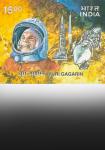India’s policy for agriculture trade must move commodity-by-commodity to gain maximum benefits as US President Donald Trump’s 26 per cent tariff on exports from the country take effect, said agriculture economist Ashok Gulati in a recent policy paper.

India should rationalise 'outlier tariffs' -- those above 50 per cent -- on agricultural items, said the paper written for the Indian Council for Research on International Economic Relations.
The country should consider employing tariff quotas on sensitive food items such as (wheat and dairy), the paper said.
India usually has large domestic surplus in wheat and dairy and though the paper did not say this explicitly, a tariff quota on the two items will ensure that domestic industry is not harmed and trade relations are not affected as well.
'India must simultaneously push the US for preferential market access on high-value Indian agri exports, such as mangoes, grapes, pomegranates, bananas which have long faced regulatory hurdles in the US, while streamlining our export supply chain,' said the paper, which was co-written by Sulakshana Rao and Tanay Suntwal.
With the right mix of diplomacy and economic strategy, India can strengthen its position in the US markets, even as the global trade order begins to shift.
The paper called for diversifying India’s agriculture exports markets away from the US towards regions like the European Union (EU).
'The EU, with 28.42 per cent of global imports, is a viable alternative.
"Fast tracking FTAs [free trade agreements] with the EU and even UK is key to staying competitive amid rising trade tensions,' the paper said.
Things are in flux and the impact of Trump’s tariffs will be known in at least three to six to months.
'[The] Main point that we want to emphasise here is that India should not see the 26 per cent tariff in isolation, it must be assessed in relation to how India’s competitors are affected. While India was levied an average additional tariff of 26 per cent, China was imposed a massive 54 per cent.'
This presents India with a strategic opportunity to occupy the space that China will likely vacate in key labour-intensive and export sectors, said the paper.
As an example, the paper said in textiles (HSN codes 57, 61, 62 and 63), where India's exports to the US stood at $9.5 billion (2023), there is now a potential upside over the next few years if India can plug the gap left by China (54 per cent new US tariff levy), Bangladesh (37 per cent) and Vietnam (46 per cent).
Besides agriculture, India enjoys a relatively better tariff position in machinery, smartphone, telecom, and networking; toys and games, leather, and footwear sector.
'Our research implies that India has a strategic opportunity to occupy the space that China will likely vacate in key labour-intensive and other export sectors.
'India’s approach to Trump’s reciprocal tariff move must be constructive and not combative.
'The bilateral talks [with the US] beginning next week should be forward looking towards Mission 500, i.e., more than doubling bilateral trade to $500 billion by 2030,' the paper said.
India’s largest agricultural export to the US is shrimp and prawn products, both in frozen (HSN 030617) and prepared/preserved (HSN 160521) forms.
'With a current 0-5 per cent tariff, Indian shrimp accounts for over 40 per cent market share in frozen and 27 per cent in prepared segments.
'However, under a reciprocal tariff regime, India’s exports will attract 26 per cent duties, making them significantly costlier.
In contrast, Ecuador, and Argentina benefit from 10 per cent tariffs, while Indonesia (32 per cent), Vietnam (46 per cent), and Thailand (36 per cent) face higher tariffs.
'While we do have cost competitiveness, the cost burden of tariffs gradually reduces our share especially in value-added segments. India may lose its market share to Ecuador and Argentina,' the paper said.
The USA’s most favoured nation tariff on rice is already high at 11.2 percent, and its proposed reciprocal 26 per cent tariff would further constrain India's competitiveness.
Thailand, the largest supplier to the US, faces a higher 36 percent tariff advantageous to India, although Thailand’s Jasmine rice carries a special preference for many.
'India needs to improve on branding and quality differentiation of Indian basmati and other rice varieties like ‘Sona Masuri,’ to capture some share of Thai rice,' the paper said.
It said among other items, like vegetable saps and extracts (HSN 130219) and plant-based products used in perfumery and pharmacy (HSN 121190), India currently has 30 percent market share with existing zero tariffs.
'However, post the 26 percent additional reciprocal tariff, Indian products would become more expensive than competitors Mexico, France, and Spain, many of whom benefit from lower duties or FTA-based preferential access,' the report said.












 © 2025
© 2025